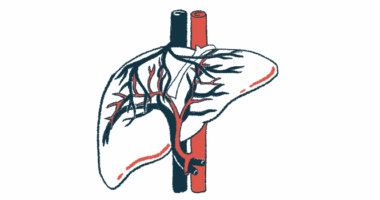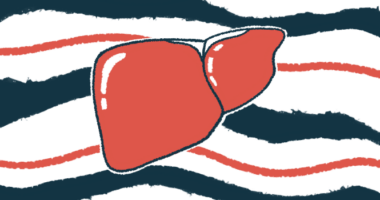Maralixibat reduces itch in children with biliary atresia: Case series
Real-world data on 5 treated children revealed no significant side effects

Off-label treatment with Mirum Pharmaceuticals’ maralixibat led to clinically meaningful reductions in severe itching, or pruritus, in five children with biliary atresia, including those with progressive liver disease.
That’s according to real-world data shared by Natasha Dilwali, MD, of the Johns Hopkins University School of Medicine, in Maryland, in a poster presentation at The Liver Meeting, recently held in California by the American Association for the Study of Liver Diseases.
The Mirum-funded analysis was presented in the poster titled “Real-world Use of Maralixibat in Biliary Atresia: A Case Series.”
Sold under the brand name Livmarli, maralixibat is approved in the U.S. and European Union to treat pruritus in people with Alagille syndrome and progressive familial intrahepatic cholestasis, two rare liver diseases also marked by pruritus.
Children treated with off-label maralixibat in compassionate use program
In the study, children with biliary atresia were treated with off-label maralixibat as part of an international compassionate use program. This type of program offers people with life-threatening conditions, but no effective treatment options, access to therapies not approved for their condition.
“These real-world cases provide evidence that maralixibat may be effective for the management of … pruritus in patients with [biliary atresia],” the researchers wrote in the poster.
Biliary atresia, a rare liver disorder that affects infants, is marked by the blockage or absence of bile ducts, the tubes that transport the digestive fluid bile from the liver to the intestines. This slows or halts the flow of bile, a condition called cholestasis.
Without treatment, bile can build up in the liver to toxic levels and lead to irreversible liver scarring (cirrhosis) and liver failure.
The main treatment option for biliary atresia is a Kasai portoenterostomy, a surgical procedure that creates new tubes to carry bile out of the liver. Even then, some patients continue to experience symptoms that diminish their quality of life, including severe itch, which occurs when bile acids back up into the bloodstream.
Newly presented data included five children (four girls and one boy) with biliary atresia who received maralixibat for at least three months to manage their pruritus.
Children had undergone Kasai portoenterostomy
The children had undergone the Kasai portoenterostomy at a median age of 64 days (about 2 months) yet experienced pruritus at a median of 9 months, ranging between 5 and 20 months.
All were initially treated with at least two medications for pruritus: ursodeoxycholic acid, or ursodiol (sold under the brand names Urso and Actigall), and the antibiotic rifampin. Four also received an antihistamine in an attempt to manage itching.
Maralixibat was started at a median age of 2.9 years, given once or twice daily. At that time, none of the children were undergoing evaluation for liver transplantation. Still, three had a history of liver disease-related complications, including an enlarged spleen, low platelet counts, fluid buildup in the belly (ascites), and gastrointestinal bleeding.
Pruritus was assessed using the clinician scratch scale (CSS), with scores ranging from 0, or no rubbing/scratching, to 4, marked by bleeding and scarring from scratching. Clinically meaningful reductions in pruritus were defined by a CSS score drop of at least one point.
Before maralixibat treatment, three children had a CSS score of 3, indicating the presence of abrasions from scratching, and two had a score of 4. At the last follow-up visit, five to 13 months after starting maralixibat, all children had experienced clinically meaningful reductions in itching.
Two girls and the boy had a complete resolution of pruritus, with CSS scores dropping from 3 or 4 to 0. Another girl’s CSS score fell from 4 to 2, and the remaining girl’s score dropped from 3 to 1.
After starting maralixibat treatment, three children had their doses of anti-itch medications lowered, and none had their doses increased.
According to the poster’s abstract (#4419), maralixibat was generally well tolerated, without significant side effects related to gastrointestinal complications.
“These data highlight the need for larger studies to systematically evaluate the potential of maralixibat for the treatment of cholestatic pruritus in patients with [biliary atresia],” the researchers concluded.








